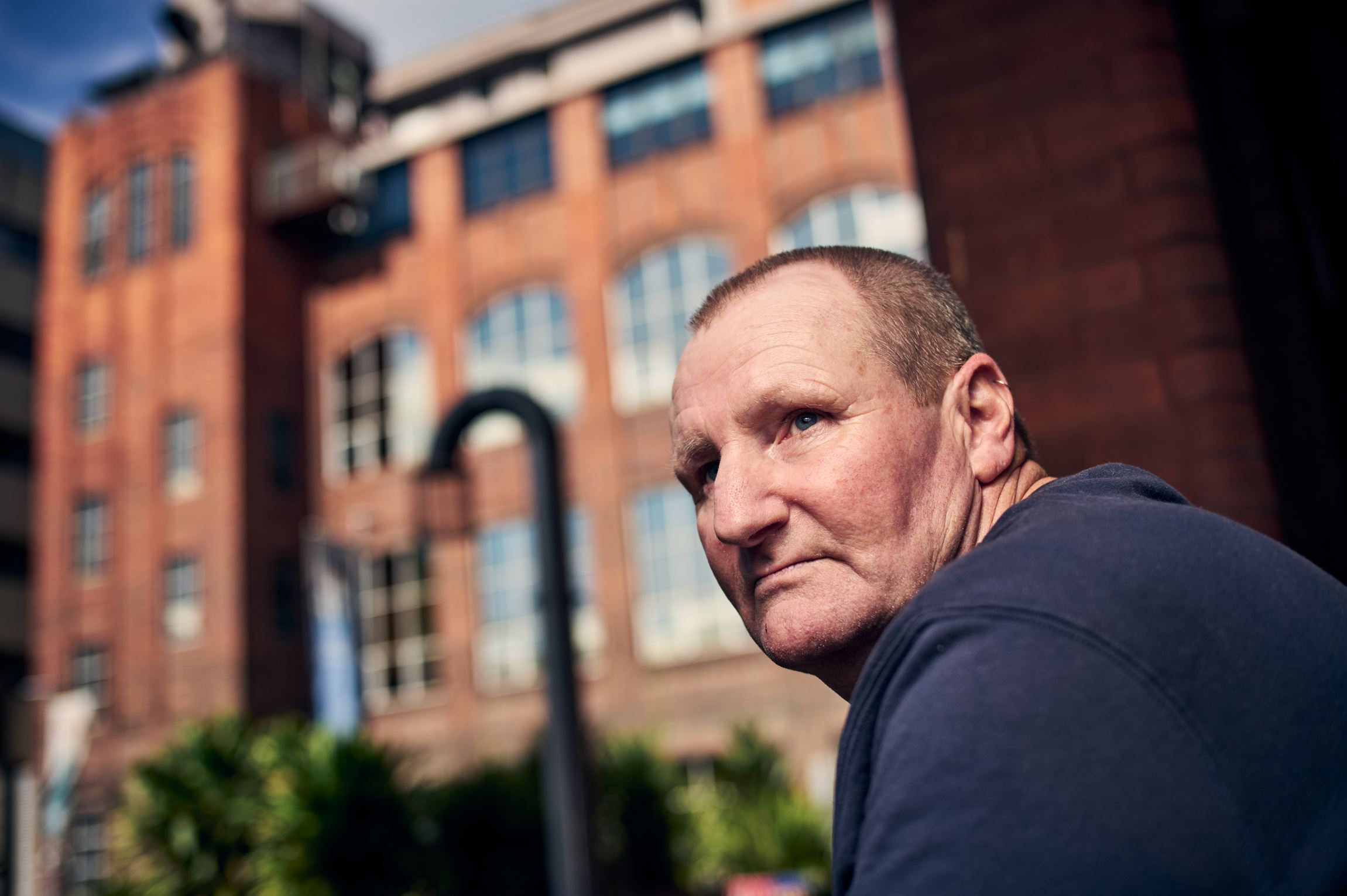New study undertaken by St Vincent’s researchers reveals connection between homelessness and health outcomes

Pictured above: James Morrow
Researchers at St Vincent’s have undertaken a world-first study into homelessness, exploring the connection between homelessness or marginal housing and premature death.
The study tracked the mortality outcomes of 6290 patients (1050 homeless, 518 marginally housed, 4722 housed) who had presented at St Vincent’s Emergency Department, in Fitzroy, during 2003-04 over 16 years, using national death records.
It was led by St Vincent’s Hospital Melbourne Research Fellow Dr Rachel Zordan and the University of Melbourne’s Associate Professor Vijaya Sundararajan.
The study found that people who have experienced a single episode of homelessness – whether rough sleeping, in an emergency shelter, a boarding house or couch surfing – had a four times higher risk of premature death compared to the general population.
And people who are marginally housed – that is, in unstable housing and receiving government support to maintain their rental accommodation – are at a 2.6 times higher risk of premature death.
Inequality in the risk of death
According to the study, the median age of death was younger in people who had experienced homelessness (57 years) and people who had been marginally housed (73 years) compared to people in stable housing (79 years). It showed that people who have experienced homelessness and marginal housing died 22 and six years younger on average than people in stable housing.
“There is marked inequality in the risk of death between the three groups at similar ages. In other words, the risk for a homeless patient dying at the age of 55 years in this study is equal to the risk in the general Australian population for men at age 72 and women at age 77,” said Dr Zordan.
“So, the homeless group experiences the same risk of death at 55 that the overall Australian population experiences 20 years later.
“People experiencing homelessness have more health problems – often struggling with a range of co-morbidities – than the general population. They also exhibit high rates of mental illness, alcohol and drug use, trauma, cognitive impairment, and suicide. Being homeless can exacerbate chronic health problems and create new ones.”
In an interview with the Herald Sun, James Morrow, who is now in stable housing and doing well, said he has undergone two open-heart surgeries for conditions he said were exacerbated by periods of homelessness.
“With me it led to all different sorts of things, high blood pressure,” he said.
“Winter on the streets is not good for your health.
“And the longer I was homeless the more entrenched my drug use got … it just made it easier to numb the brain.”
Data-driven discoveries
The paper is the first study in available literature on mortality and causes of death to include homeless and marginally-housed patients over an extended follow-up period and using national mortality data.
“Access to the records allowed us to gather far more detailed data on the causes of death including alcohol and other drugs, cardiovascular disease, cancer or respiratory than any previous similar study in Australia,” said Dr Zordan.
According to the study, the leading cause of death among people who had experienced homelessness was ‘external’ – a category which includes alcohol and drug related deaths, but also accidental deaths and suicides (24.8%), followed by cardiovascular disease (21.3%) and cancer (14.7%).
Housing must be long term, sustainable and supported
“While health can improve once a person moves into housing – providing that housing is fit for purpose – those issues just don’t go away overnight. Housing must be long-term and sustainable. And people need to be able to access the necessary health services to help them maintain their accommodation,” said Associate Professor Sundararajan.
“Our findings indicate that being marginally housed may reduce some of the risks of premature death associated with homelessness, but not completely.”
“We welcome the recent commitment of the Federal Government to build 30,000 new social and affordable housing properties in five years, but industry experts believe we can actually need government to rapidly deliver at least 25,000 new social homes across the country every year if we’re going to meet the current shortfall,” said Dr Zordan.
“And if we want to go about relieving the burden from the health system long-term… there’s no better antidote than a safe, secure house.”